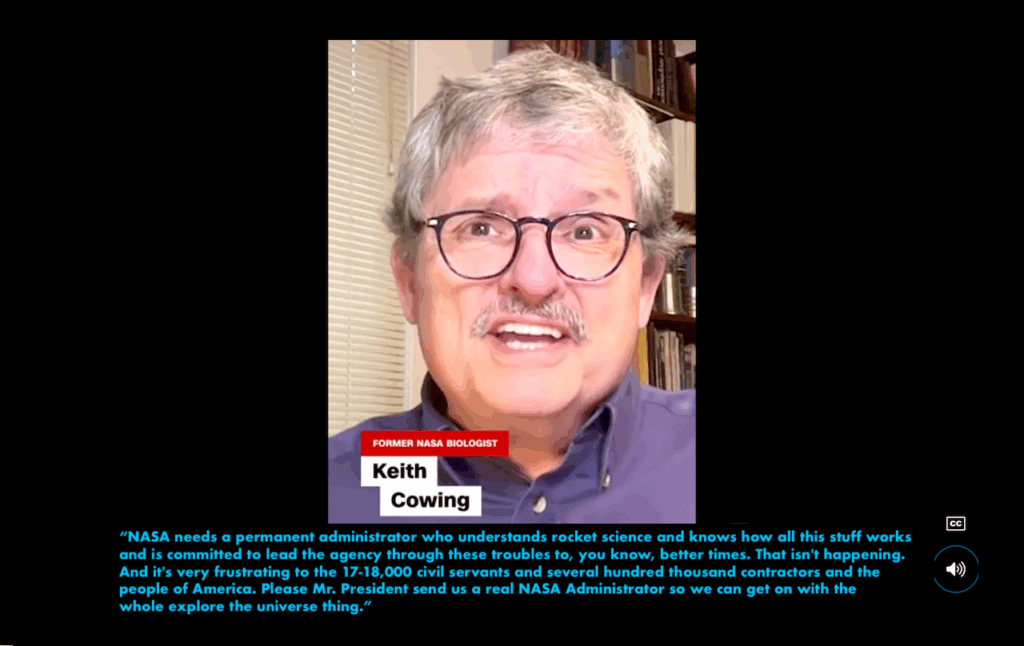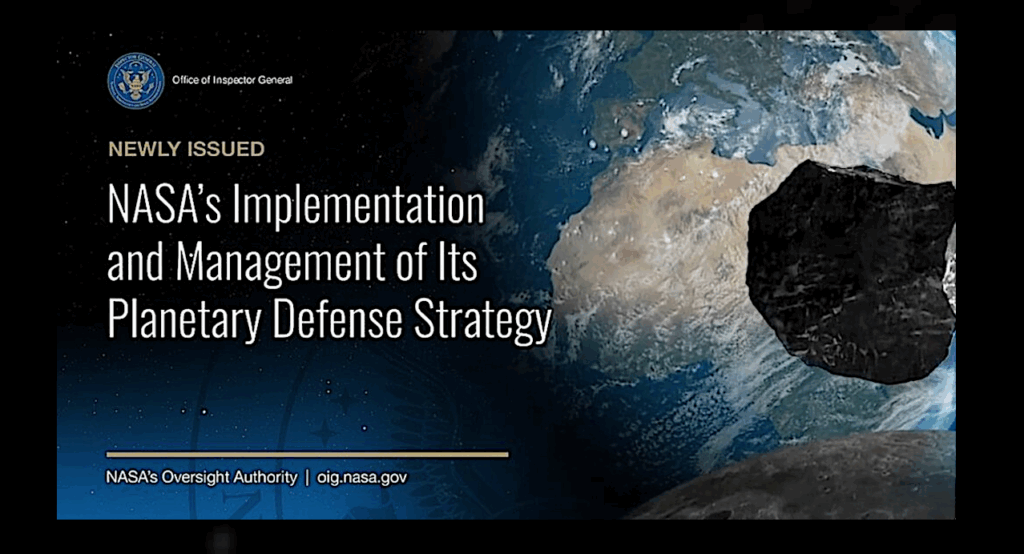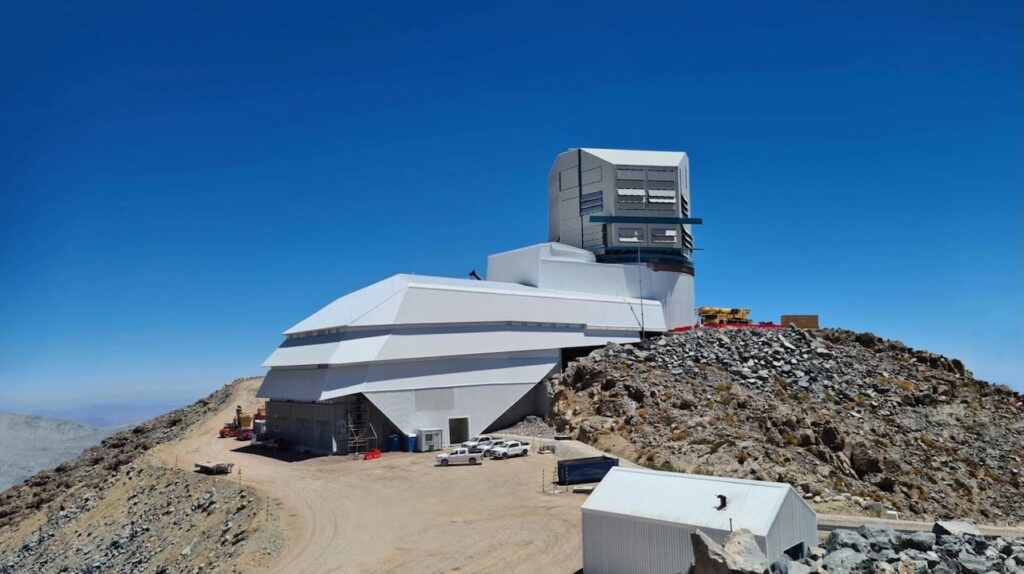Hubble Space Telescope Is In Safe Mode After Gyro Failure (Update)

Hubble Is In Safe Mode As Gyroscope Issues Are Diagnosed, NASA
“The gyro that failed had been exhibiting end-of-life behavior for approximately a year, and its failure was not unexpected; two other gyros of the same type had already failed. The remaining three gyros available for use are technically enhanced and therefore expected to have significantly longer operational lives. Two of those enhanced gyros are currently running. Upon powering on the third enhanced gyro that had been held in reserve, analysis of spacecraft telemetry indicated that it was not performing at the level required for operations. As a result, Hubble remains in safe mode. Staff at NASA’s Goddard Space Flight Center and the Space Telescope Science Institute are currently performing analyses and tests to determine what options are available to recover the gyro to operational performance.”
 Keith’s 7 October note: According to these tweets from Dr. Rachel Osten, Deputy Mission Head for the Hubble Space Telescope at the Space Telescope Science Institute, the Hubble Space Telescope is in Safe Mode after a gyroscope failure. No word from NASA PAO yet.
Keith’s 7 October note: According to these tweets from Dr. Rachel Osten, Deputy Mission Head for the Hubble Space Telescope at the Space Telescope Science Institute, the Hubble Space Telescope is in Safe Mode after a gyroscope failure. No word from NASA PAO yet.
 Keith’s 8 October 9:21 am EDT update: According to According to this update: “Daily Report #8120 Period Covered: 08:00 PM October 06, 2018 – 07:59 PM October 07, 2018 (DOY 280/0000z – 280/2359z) There were no scheduled observations during the report period.”
Keith’s 8 October 9:21 am EDT update: According to According to this update: “Daily Report #8120 Period Covered: 08:00 PM October 06, 2018 – 07:59 PM October 07, 2018 (DOY 280/0000z – 280/2359z) There were no scheduled observations during the report period.”
|
|
|
|









I wonder how many people know that Webb won’t produce the pretty pictures that Hubble has done?
Assuming it ever makes it to it’s L2 location it certainty will.
https://jwst.nasa.gov/nirca…
Even if it observes in the IR you can still make pretty pictures out of them. Then again it depends on what you consider pretty.
Also they will produce pretty pictures just for PR to show the tax payers what they paid billions of dollars for.
False color pictures made from IR data just aren’t the same as pictures made directly from visible light data.
Almost all professional astronomical images released are false color. So I really don’t the see the difference.
Based on the images which show up on NASA’s Astronomy Picture of the Day, there are some people out there who can do a good job. They frequently feature images which are false color, often combining wavelengths which are way outside the visible range. At the same time, the Juno images of Jupiter are extremely false color, stretched and otherwise enhanced. People love them _because_ they are much more exciting than what Jupiter actually looks like.
To fcrary, Jack, and Gerald Cecil:
I stand corrected.
Ideally they are 3 channels of useful info, usually a broadband for max sensitivity and narrow bands to highlight gas emission. JWST will do this well in the near-IR that for a target at redshift > 0.1 will actually be visible light (Halpha). It won’t have the angular resolution of HST, it will actually be blurrier than images from larger ground-based telescopes that are equipped with adaptive optics systems (most are these days). JWST’s forte will be in the thermal IR, again visible light at much higher redshift, that is completely swamped on the ground by atmospheric and telescopic emission. There are photonics tricks under development to cut out night-sky emission lines but they will only work in the near-IR … out to about 1.7 microns. Beyond that, space is key.
Hopefully it will continue to be operational until SpaceX is able to send the BFS on a repair mission to it.
That won’t happen. The timetables for BFR and BFS are GREATLY exaggerated. Keep in mind that these projections for BFR and BFS are coming from a guy who got himself sued by the SEC and kicked out of chairmanship of his own company for a marijuana tweet disguised as a desire to take the company private. (Or maybe it was the other way, that was so screwed up)
It’s true that Elon makes an ass of himself from time to time. And it’s true that timetables are, ahem, aspirational. And as a person with a fair amount of Tesla stock, sometimes I just roll my eyes.
Doesn’t matter.
NOT!
What about a crew Dragon (or Orion) with 3x crew (2x experienced Shuttle-Hubble Astros) and CMG’s in the Dragon’s trunk! Two of the Astronauts could perform a pair of EVAs to install new gyros and batteries and the other Astro would be there to assist them in suiting up and ‘flying’ the Dragon.
Can the Dragon be configured to do multiple EVAs? If the Falcon 9 is fully expended and launched to the 28.5 degree inclination orbit that Hubble is in: would the Dragon have enough delta-v to reach the telescope? Can a set of gyros and batteries fit in the Dragon’s cargo trunk? I’d love to see someone do a feasibility study on a mission like this!! And could the Dragon dock with the docking unit that was left on the Hubble by the STS-125 crew? Could EVA’s be done on the telescope without an RMS system? Or could the crew suffice with the pole system that was being looked at for the now abandoned Asteroid Rendezvous mission?
Can any of the smart people around here explain how three axes are controlled with a single axis gyro?
With magnetic torquers for angular momentum input, star trackers for inertial reference, and the derivatives of momentum wheel speeds for rate information (replacing gyro input). The International Ultraviolet Explorer (IUE; a much smaller spacecraft, launched in 1978) eventually operated in a no-gyro mode once all six of its gyros had failed.
The Solar and Heliospheric Observatory (SOHO) has been operating in a no-gyro mode since 1999. It has both star trackers and sun sensors for reference, and wheels for rate information.
Except during momentum dumps (thruster firing), the STEREO Ahead spacecraft also operates on sun sensors/star trackers plus momentum wheels alone, after the failure of the primary MIMU (contains three ring laser gyros) and the aging/bad potential failure mode of the spare was recognized.
Does that technique require more thruster firings to maintain it’s desired orientation?
HST doesn’t use thrusters at all. Turns are done with reaction wheels and magnetic torque bars are used to desaturate the wheels as needed.
One advantage of operating close to the earth is that a spacecraft can take advantage of the planets magnetic field for momentum control.
Unless you happen to be a scientist who cares about measuring magnetic fields. Them magnetic torquers are the last thing you want. But this is also an issue for small (e.g. CubeSat) planetary missions. The off the shelf attitude control systems for them generally use magnetic torque to dump momentum, and that doesn’t work well above low Earth orbit (possibly up to geostationary, but I’d consider that marginal.)
No. Periodic (SOHO) or occasional (STEREO-A), very small thruster firings to dump angular momentum to keep the wheels in safe speed ranges, whether or not gyros are in use for rate information. (SOHO also needs to perform orbit-shaping firings 4 – 5 times a year to maintain its L1 orbit, which is not a closed orbit.)
However, if it’s like the last time, then there is significantly degraded tracking ability and as I recall a substantial loss of sky coverage due to lack of guide stars for a required spacecraft orientation. HST’s instruments are predicated on high tracking accuracy since spatial resolution is what it is primarily bringing to the table.
I also remember some weird rules that affected planetary observations. We could observe a planet before opposition, but not after opposition. (Or was it the other way around?) I never did figure out why that was.
I’m fairly sure those gyros are only used for attitude determination. The descriptions I’ve found says HST uses six gyroscopes for attitude determination. For attitude control, it has four reaction wheels (big gyroscopes, but called something else to avoid/cause confusion…) Since the reports say gyroscopes and the number six, that points to ones for attitude determination. There are other sensors for that, but turning to a given target and maintaining pointing stability wouldn’t be as easy or efficient.
Even if it’s the wheels, they can get by if they have an external source of torque. Kepler used photon pressure during its K2 extended mission, and HST could use magnetic torquers. I know they have studied using two wheels and magnetic torque bars. But that’s a real pain, and would cut into observing time pretty heavily. They might schedule observations to minimize turns, but even that would be a hit to time-critical observations.
In terms of satellite servicing and repair I expect the BFS will be better then the Shuttle Orbiter. It will have a larger cargo bay and could easily be equipped with a robitic arm like on the Shuttle. So if the Shuttle Orbiter could service Hubble then so should the BFS.
It might be easier (and faster) to add EVA capabilities to a Dragon 2. Without an airlock, they would have to depressurize the cabin, but that’s how they did it with Gemini and Apollo (on the surface and in space.) Another question is how long it would take to make the parts (those gyros don’t come off an assembly line) and train the crew. But HST also isn’t going anywhere until the expected reentry sometime after 2028.
That could be an option, but how would you capture it and hold it steady? If I recall they used the Shuttle Arm to keep they Astronaut in position to service it.
In terms of reentry, wouldn’t it be nice to keep it operational, especially given how long it seems it takes NASA to build new space telescopes these days. Maybe once the BFS is operational it could make it a regular mission to service it.
Take a look at the pics of a servicing mission. Hubble was attached (at its aft end) to a “cradle” in the payload bay. I see no reason you couldn’t stick a similar attachment point to either the Cygnus or perhaps even to the aft end of Dragon’s trunk.
A passive docking connector was attached to the base on the final shuttle servicing mission.
https://uploads.disquscdn.c…
Why not bring it down for a factory refurb in the aforementioned BFR?
Much safer for the astronauts. Might be done remotely.
Maybe, but given NASA’s track record on building large space telescopes it might cost a lot more and take a year or longer with cost overruns ?
But thinking about it, that could be an option for the old non-function reconnaissance satellites launched over the years. Maybe there could be a program of returning them to Earth, rebuilding them, then returning them to a HEO for use by astronomers, perhaps even creating a constellation that could function like a huge optical interferometer.
If you want to service the Hubble by SpaceX without a BFS.
Then you need to launched a 3 segment Cygnus spacecraft that have manipulator arms, airlock and modifications for EVA. Along with extra hypergolic propellant storage on external cargo racks.
The service crew goes up on a separate Dragon 2 to docked with the Cygnus before heading to the Hubble. The modified Cygnus supplies all the delta-V to get to the Hubble.
You don’t have to modified the Dragon at all and not much to the Cygnus. But getting the gyros and training the crew is going to take time. Also how long to extended the service life of the Hubble before it retires to the National Air & Space museum.
I was mostly thinking BFR would be overkill for servicing, and that nearer-term alternatives are available. If you think a Dragon 2/Cygnus joint mission would work better, I not sure I agree but I’m also not sure I disagree.
When it comes to how long we’d want to keep HST alive, I’m biased. One of my professional interests is planetary aurora. That’s a dynamic process (so you really need repeated observations) best studied in the ultraviolet. In many ways, HST is the only telescope that can do that. (I like Hisaki, but unresolved spectra are a very distant second to what HST can do.) So I’d like keeping HST operating until a similar quality UV-capable telescope is available.
That won’t be JWST or WFIRST, since they won’t have any UV capability. Large UV Optical Infrared Surveyor (LUVOIR) wouldn’t go up any time before 2035, and that’s assuming it’s (1) funded and (2) sticks to the schedule, something which JWST’s precedent makes me doubt.
Perhaps, but if it hits its price range of $10 million a launch it will be far cheaper than anything else.
To be honest, if you look at the mean time between lethal or near-lethal failures on HST (which were subsequently corrected by servicing), it’s been on borrowed time for awhile. And it’s specifically the attitude control system where those faults tend to lie. Could SpaceX service it? Well, it’s certainly possible. But it’s a big pushup in terms of training and equipment development. For years we have been debating whether the servicing missions ever made sense in the first place (beyond giving the manned program something to do) vs. the cost of just flying a new one. The real answer lies in the funny accounting – those servicing missions being billed to the manned program, not SMD (or Code S, or whatever it was called at the time).
There has been enough time to develop robotic approach to servicing for all those years spent talking about it.
The servicing missions extended the output of useful science. Hubble has become an essential part of modern astronomy.
More important possibly is the love the public has for the thing.
Well, the PR is a big part of it. My science career was built on HST to a large part. But that still calls into question the many, many billions spent on those servicing missions. HST is well into the JWST ballpark cost-wise once you factor all that in properly. We used to be able to build machines like that for a billion or so dollars, and we could literally have launched a new one every 5-10 years for the cost of fixing the old one. I will admit I have no idea why apparently we can’t do this anymore, looking at both JWST and the WFIRST cost profiles, and I specifically was involved for years with space telescope construction and flight with NASA.
In some ways, what you suggest might be a toss-up. I’d think in terms of instrument generations; the other service work would have been inherent to flying a series of similar telescopes. Thinking it over, I’d call the current instruments to be second or third generation. E.g. WFPC (Wide Field and Planetary Camera), WFPC 2, WFC3 (Wide Field Camera, and let’s kick the planetary astronomers by changing the name while we’re at it…) So we could have done something similar by flying a series of three telescopes. Based on your “new one every 5-10 years” that’s about the same as what we got from the servicing missions.
Ever notice how often “seems like” turns out to be wrong?
“Seems like on-orbit upgrades would be a great idea!”
I think one of the most all-purpose excuses for doing something stupid is, “it seemed like a good idea at the time.” But that can kill good ideas. I could complain about repeating the same mistake again. But I could also complain about giving up on the whole thing, instead of figuring out what you did wrong and trying again.
And nothing on the Falcon 9 Flight from Vandenburg on Sunday?
I live teweeted it like crazy.,
Thank you! It is just that you are my favorite place to hear all space news.
I hear you ed2291. I checked this site right away, too.
Sorry Keith; its just that some of us Luddites aren’t on Twitter..LOL
I don’t think Dragon was designed for EVAs. Their spacesuits are not EVA suits.